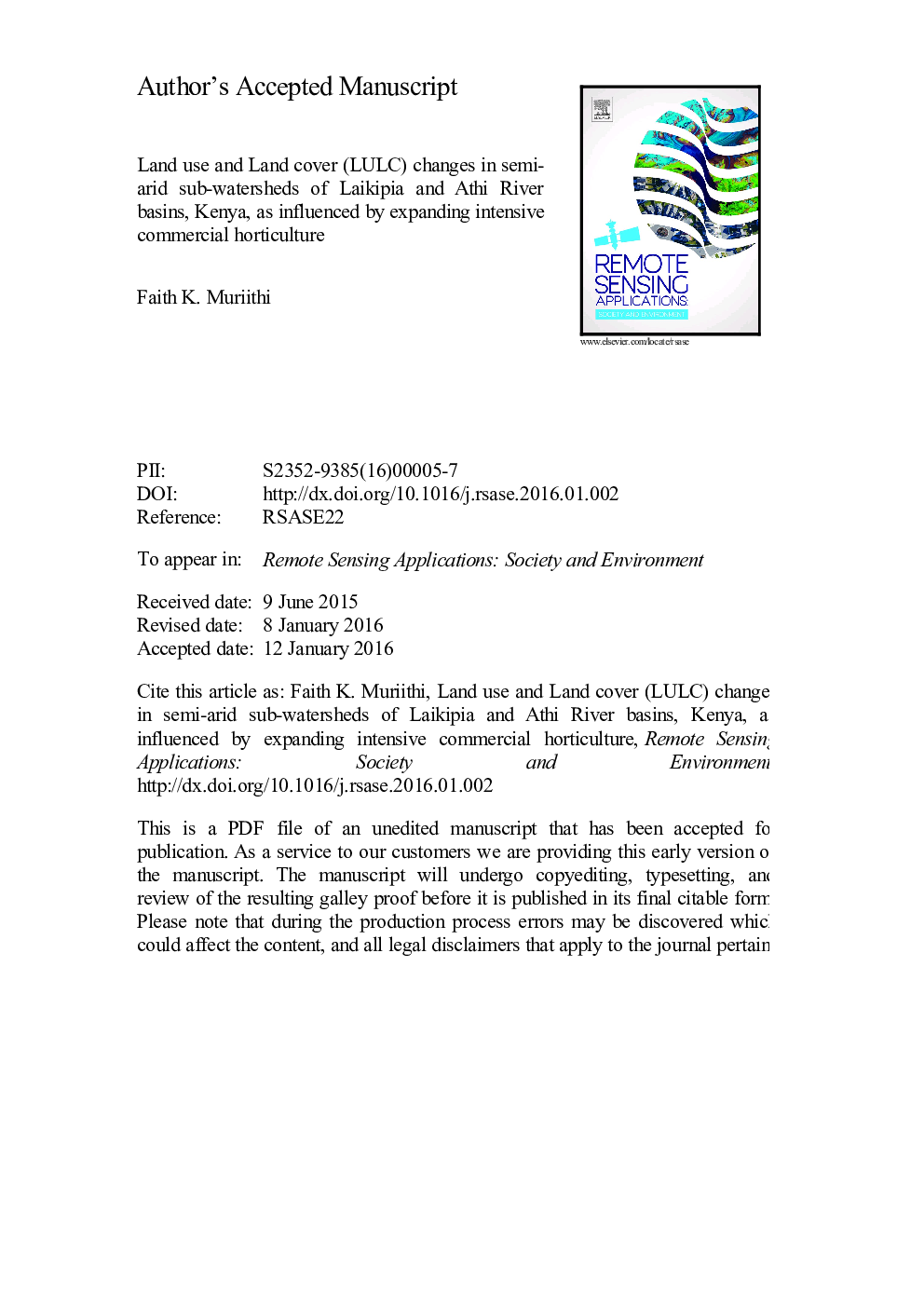| کد مقاله | کد نشریه | سال انتشار | مقاله انگلیسی | نسخه تمام متن |
|---|---|---|---|---|
| 6344809 | 1621004 | 2016 | 29 صفحه PDF | دانلود رایگان |
عنوان انگلیسی مقاله ISI
Land use and land cover (LULC) changes in semi-arid sub-watersheds of Laikipia and Athi River basins, Kenya, as influenced by expanding intensive commercial horticulture
دانلود مقاله + سفارش ترجمه
دانلود مقاله ISI انگلیسی
رایگان برای ایرانیان
کلمات کلیدی
موضوعات مرتبط
مهندسی و علوم پایه
علوم زمین و سیارات
کامپیوتر در علوم زمین
پیش نمایش صفحه اول مقاله

چکیده انگلیسی
Agriculturally productive watersheds in Kenya are experiencing important land transformations with consequences on environmental resources. Previous work identified spatial pockets of vegetation decline across sub-watersheds with intensive farming. While this is crucial information in delineating impacted regions, it is important to understand the type of occurring changes, spatial patterns and the rate of change. The study focused in the Athi River and Laikipia regions which have intensified commercial horticulture, yet marginalized semi-arid to arid environments. The study quantified land use and land cover changes between 1984 and 2009/2010, identifying areas of change and the average annual rate of change. Landsat (5 TM, MSS and 7 ETM+) multitemporal data were used in classification and change detection analysis. From the results, both regions experienced intense land transformation at varying magnitudes during the 25 years period. Woody grasslands covered vast areas. In Laikipia, the averaged percentage annual rate of land change to settlements/urban use was highest (20.2%). There was a decline in barren area, forest and wooded grasslands (â1.4%, â0.7% and â0.3% respectively). In the Athi River region, the averaged percentage annual rate of changes was in the order of agriculture, water, settlement, bare soils, woody grasslands (37.7%, 17.2%, 8.4%, 3.9, 2.9% respectively) while dark bare soils, and forest cover declined (â3.4% and â3.3% respectively). Observed LULC transformations were largely attributed to socio-economic drivers including increased human migration into agriculturally productive sub-watersheds fueling growth of settlement, increased irrigation farming and therefore increased area under water, and growth of cities and industrial areas.
ناشر
Database: Elsevier - ScienceDirect (ساینس دایرکت)
Journal: Remote Sensing Applications: Society and Environment - Volume 3, May 2016, Pages 73-88
Journal: Remote Sensing Applications: Society and Environment - Volume 3, May 2016, Pages 73-88
نویسندگان
Faith K. Muriithi,